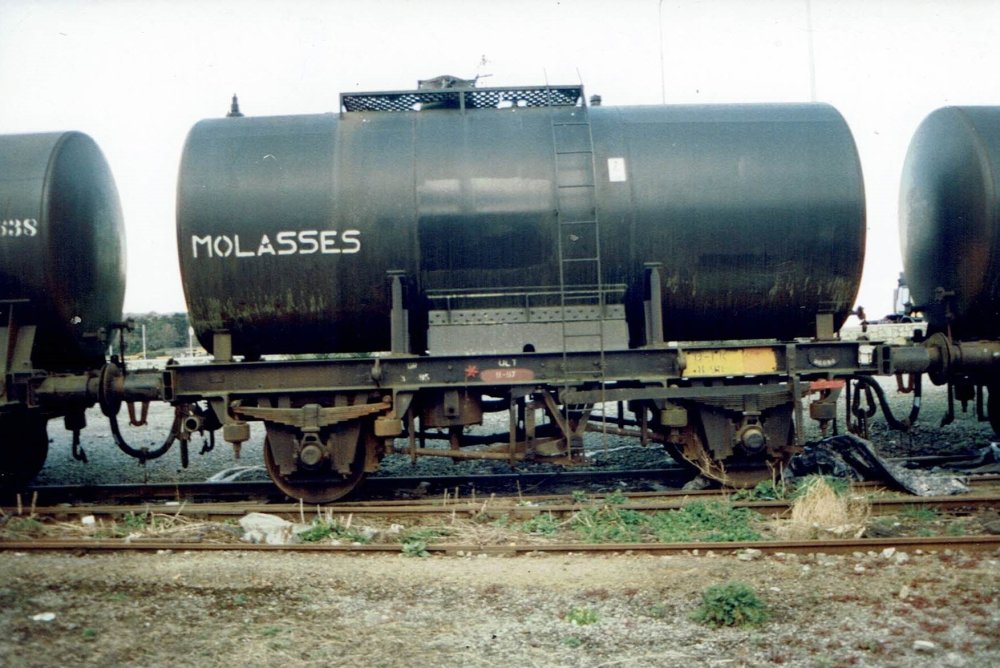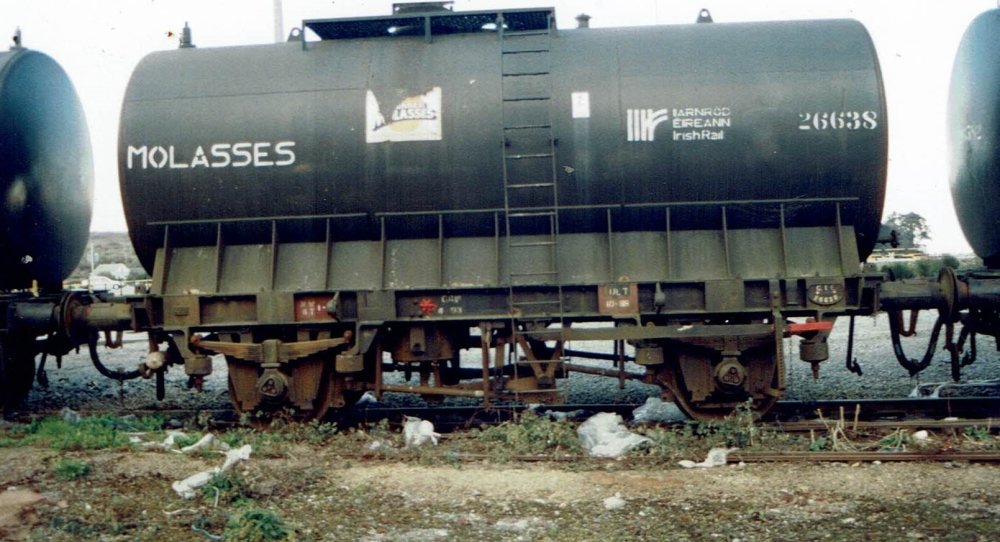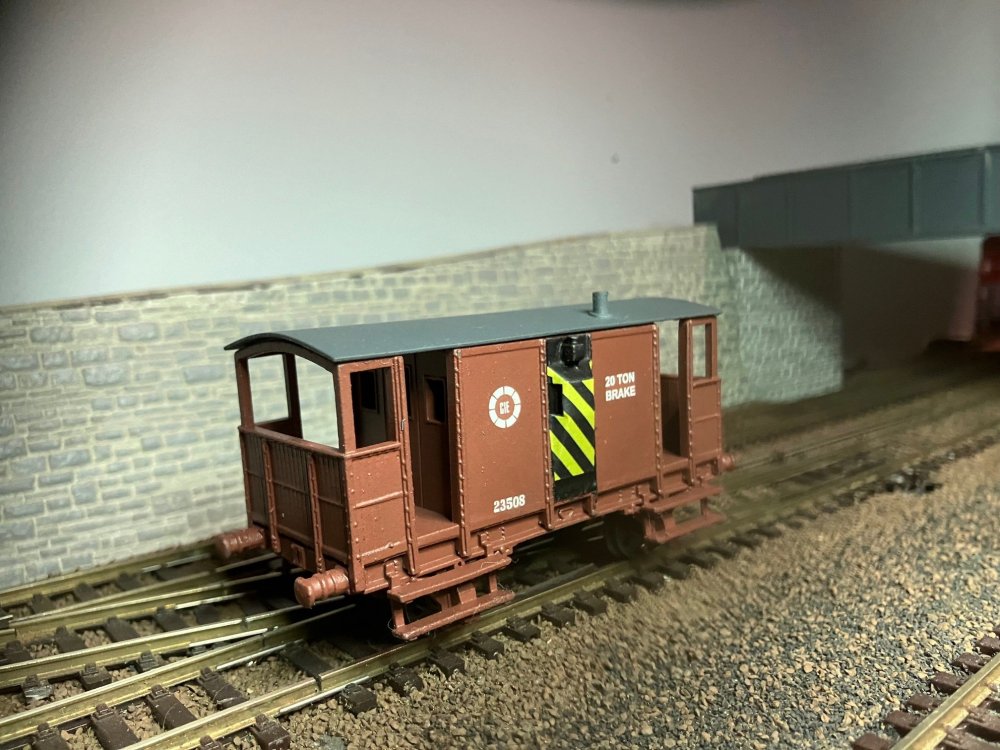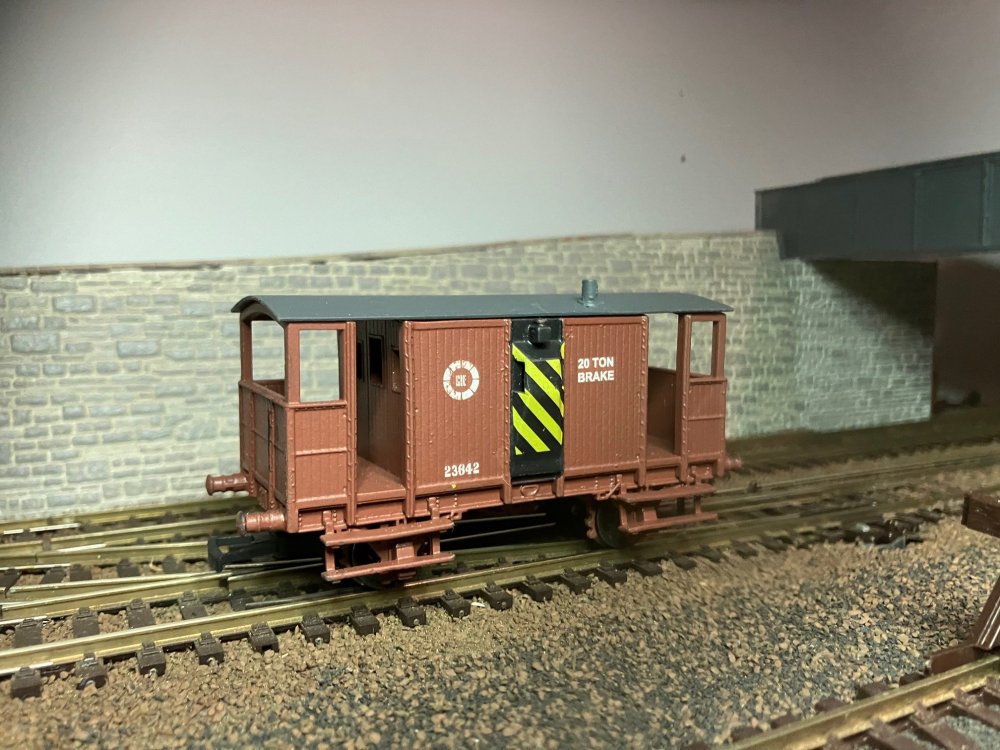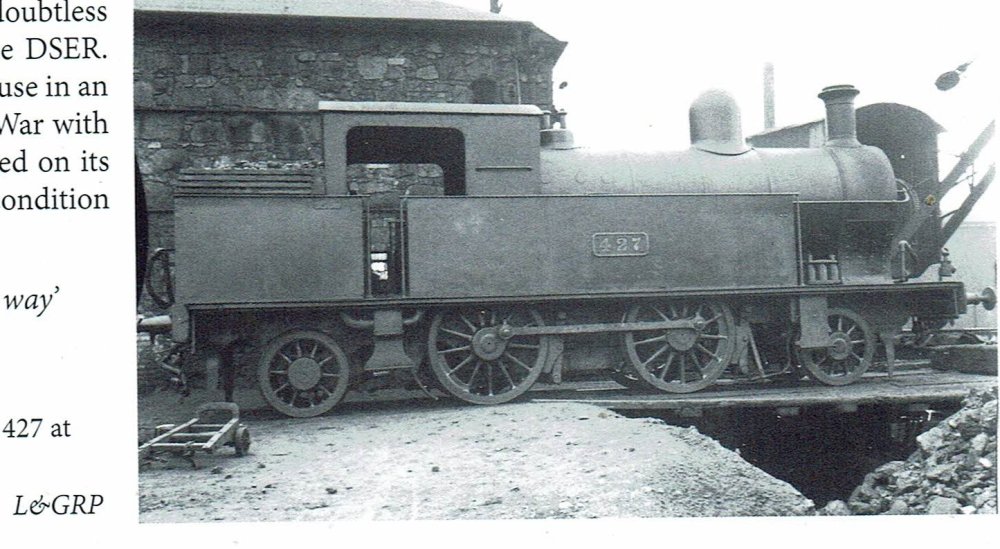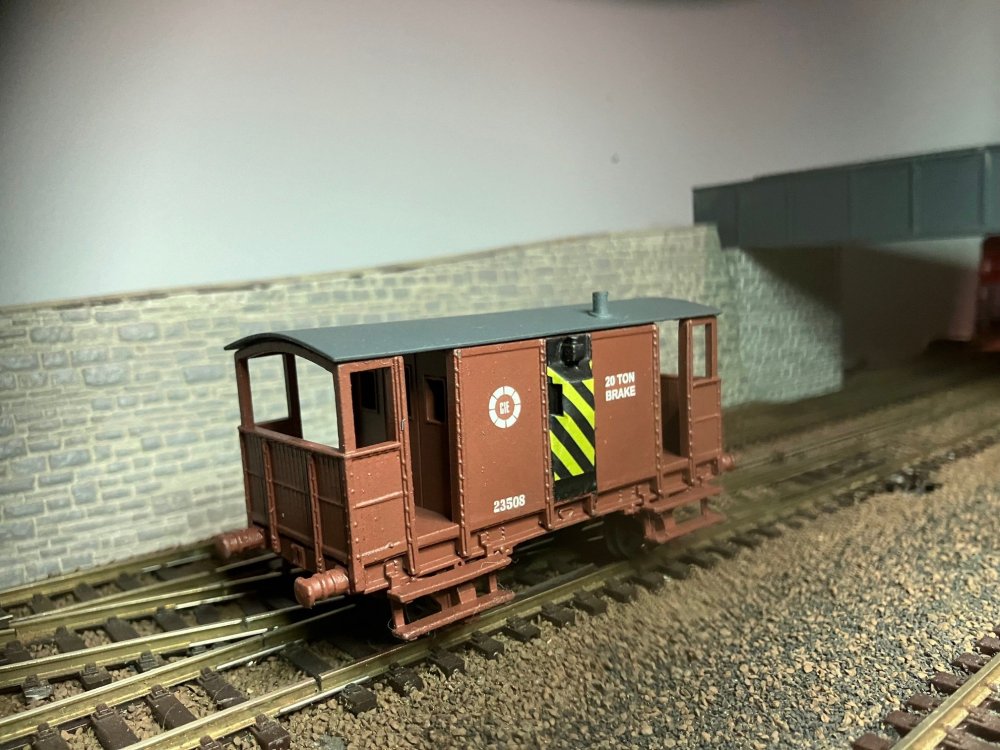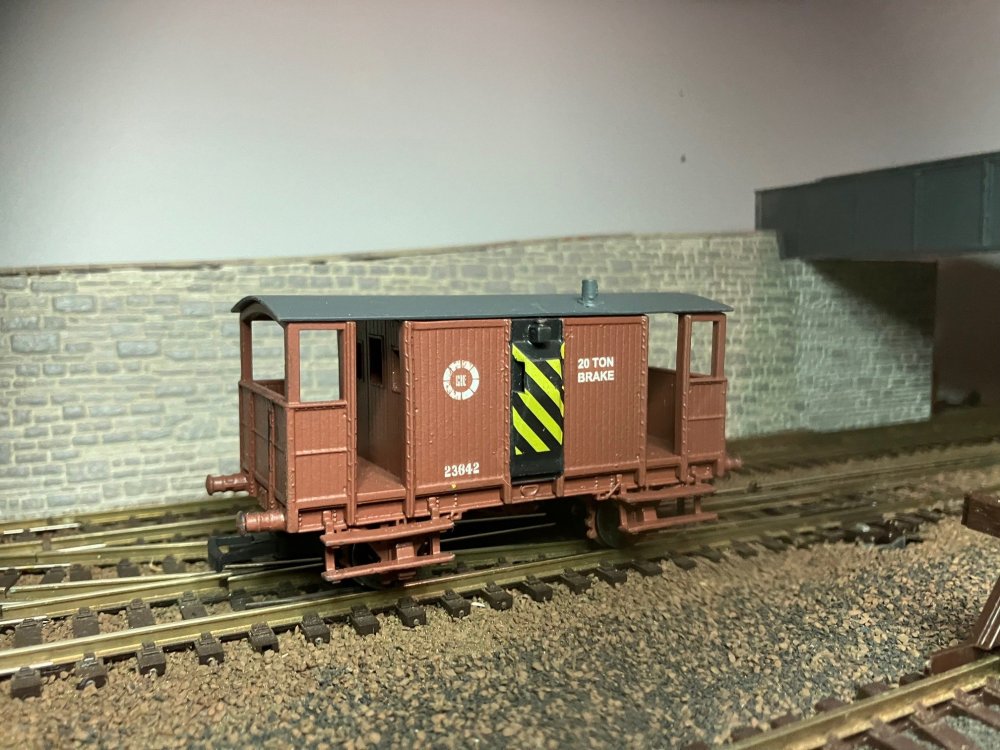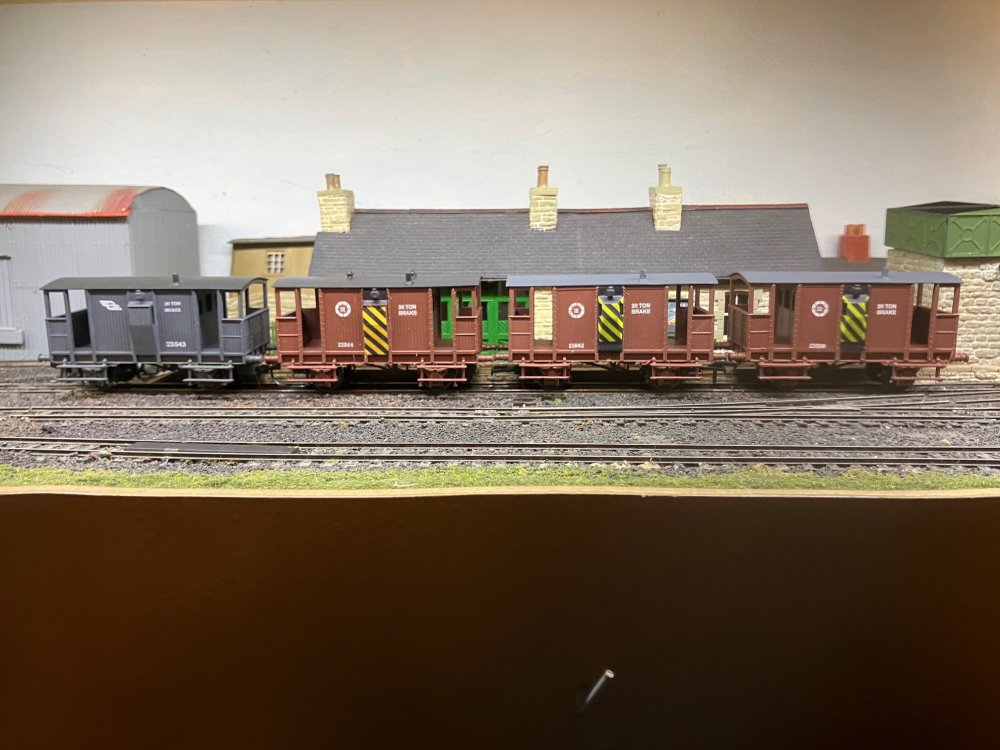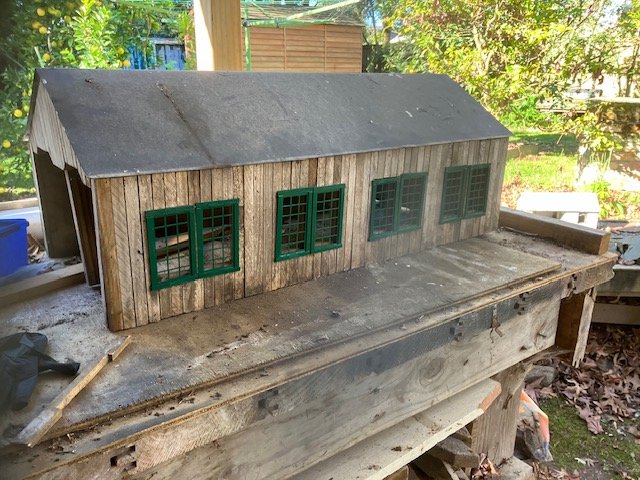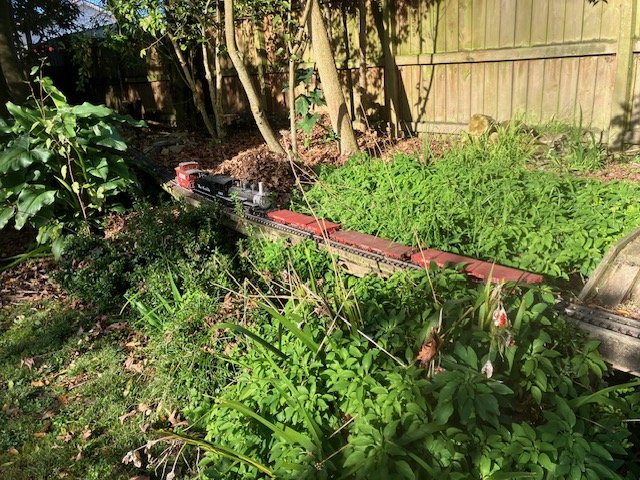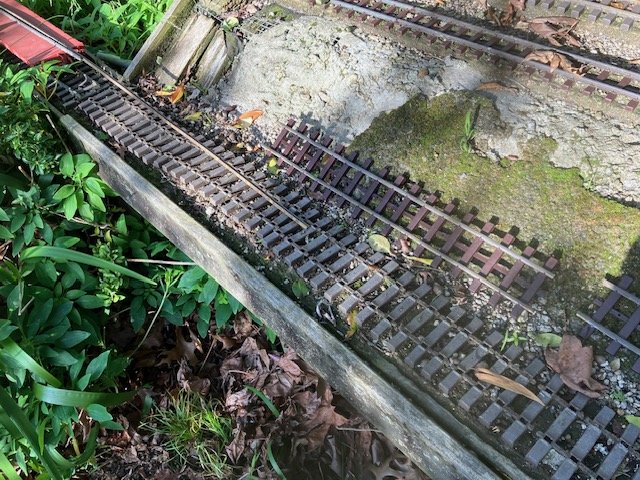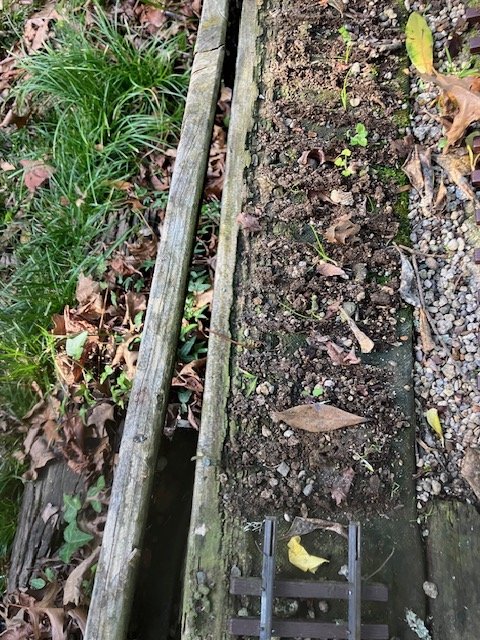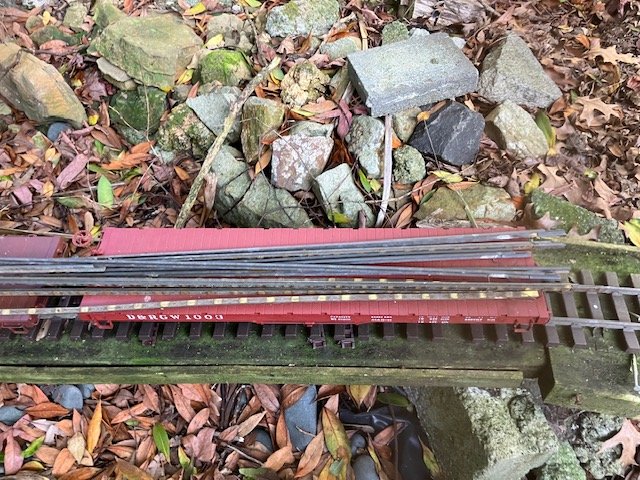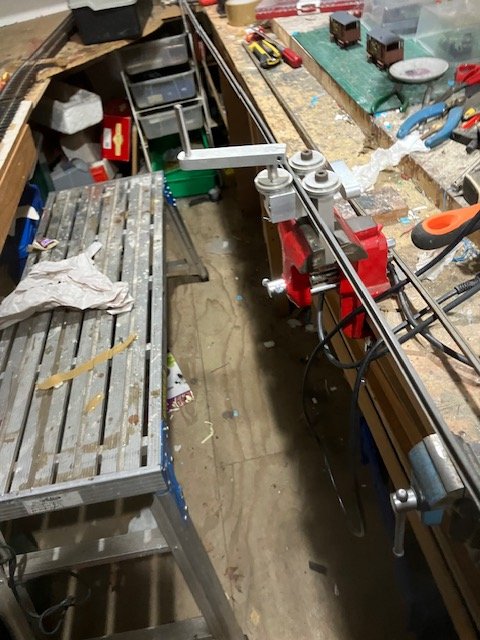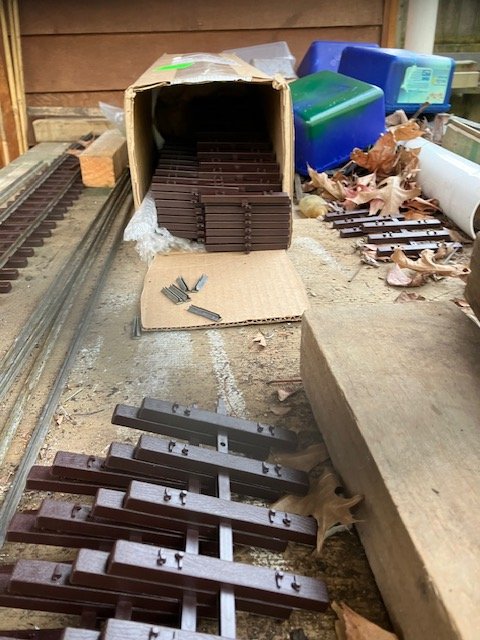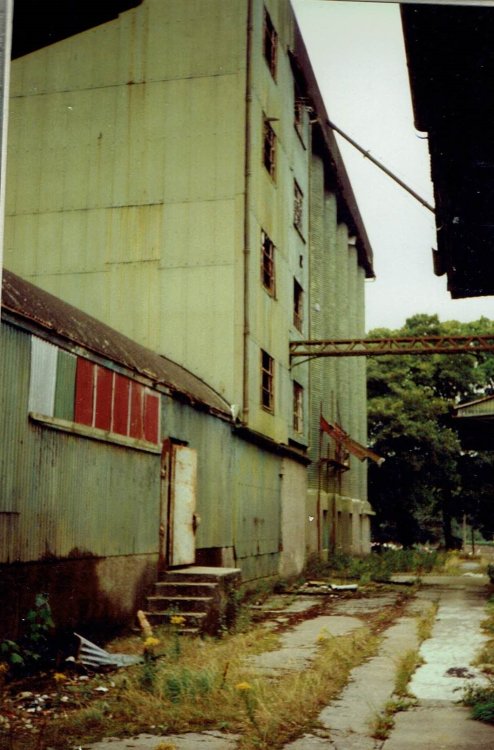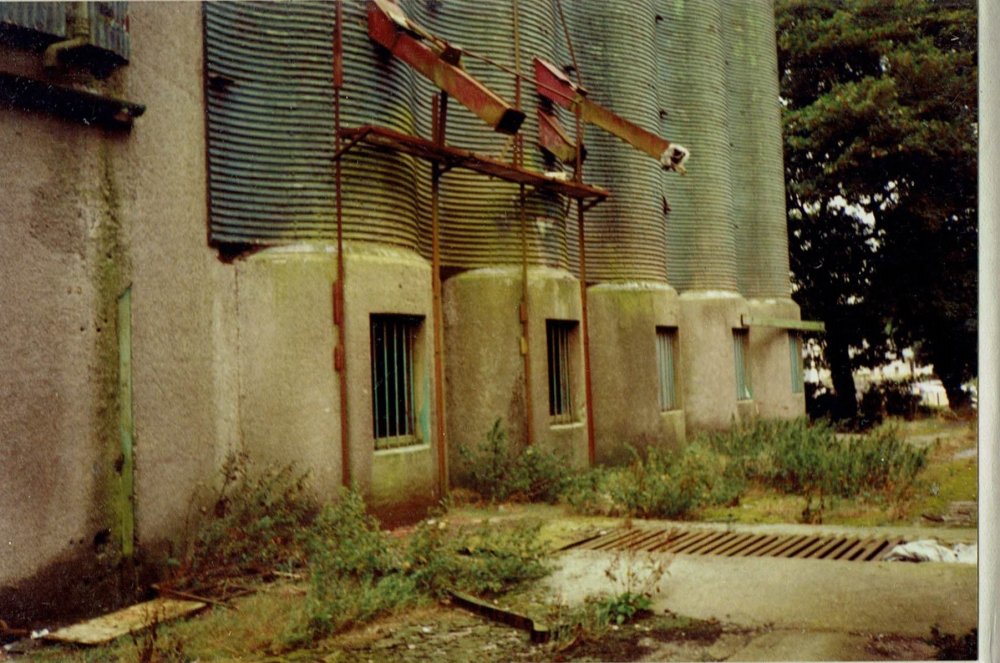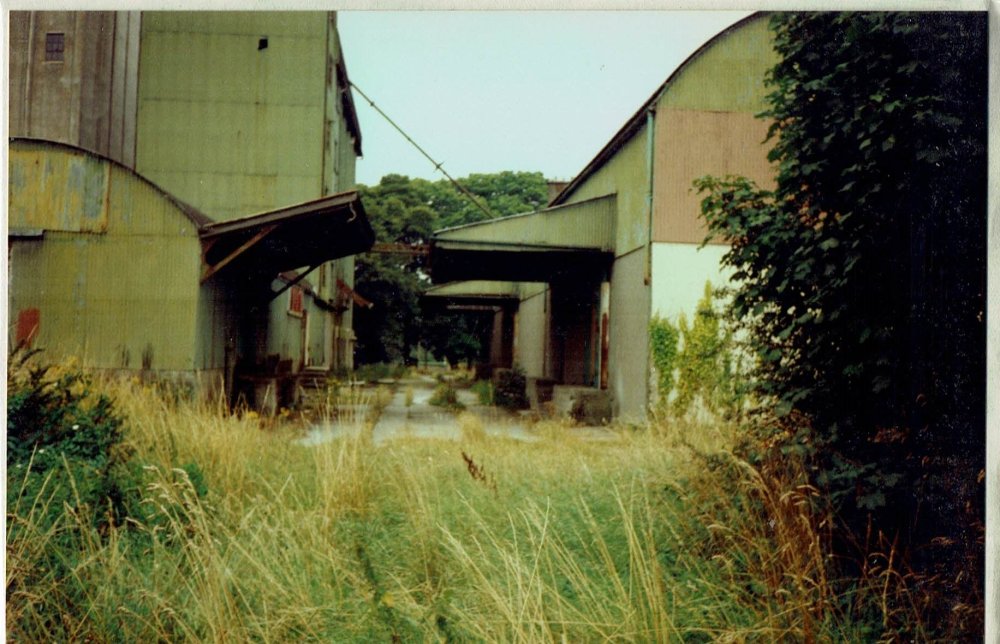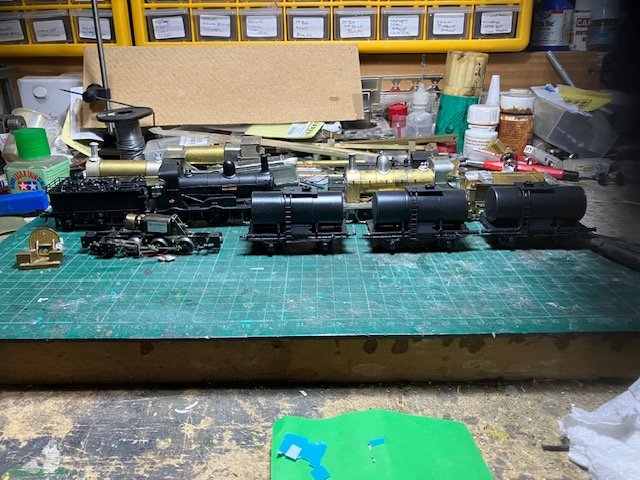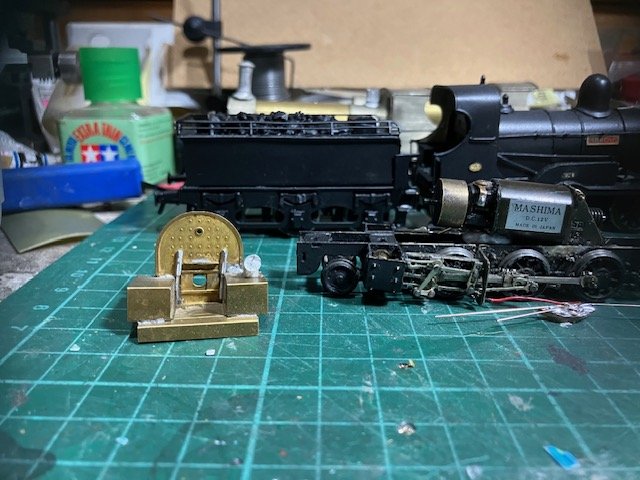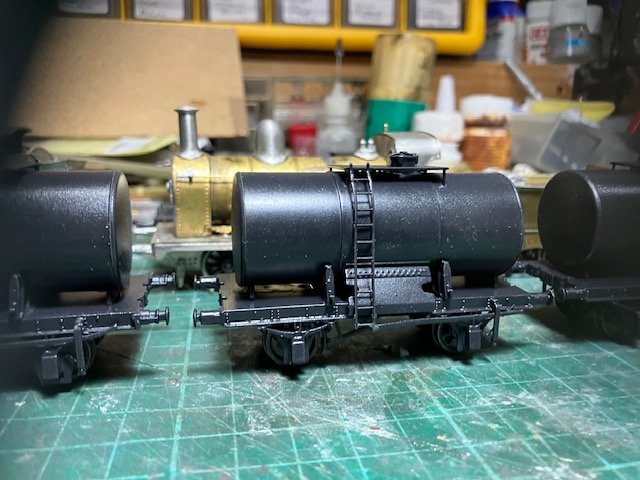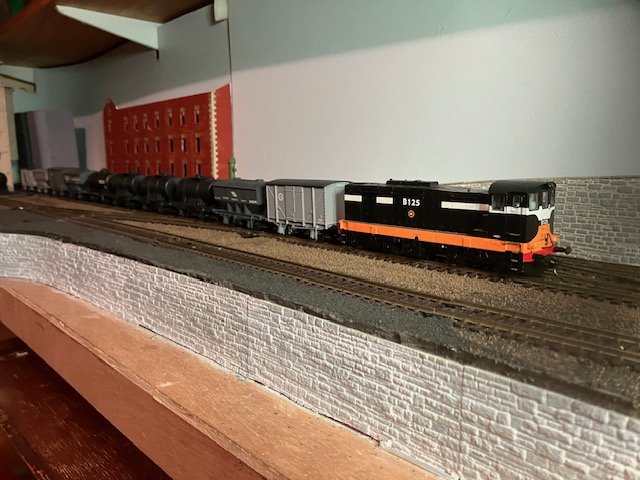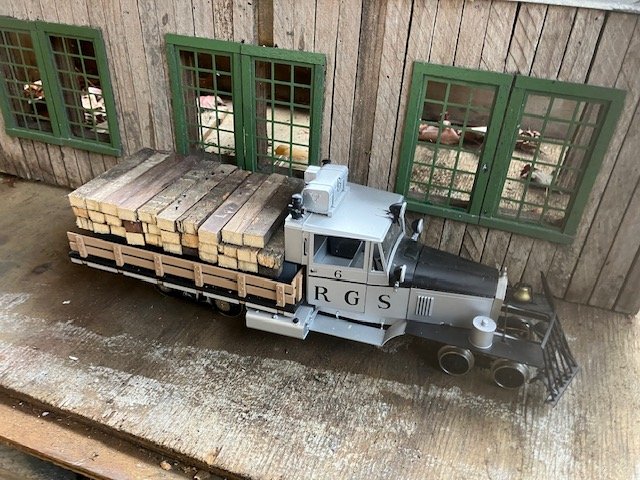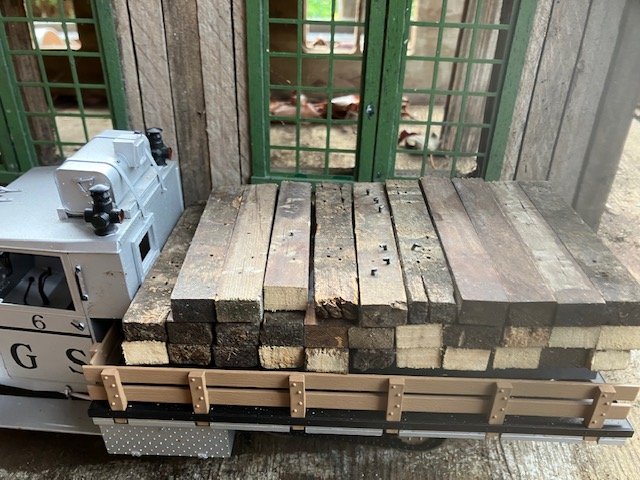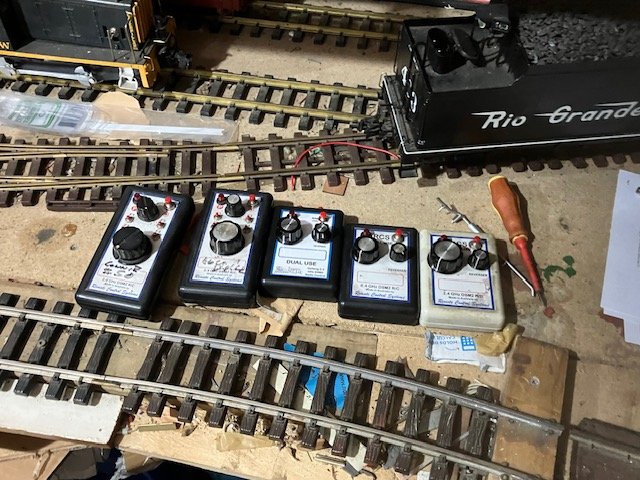-
Posts
4,855 -
Joined
-
Last visited
-
Days Won
119
Content Type
Profiles
Forums
Events
Gallery
Blogs
Store
Community Map
Everything posted by Mayner
-
I should have stressed in my last post is that the real purpose of the 'Pre-Orders" is to establish whether there is sufficient demand to continue the manufacture of RTR wagons. I expect to make an announcement by 1st August whether or not I will be producing the latest version(s) of the brake van
-
The IRM Fuel Oil tank wagons would have been out of service by the late 70s. The Molasses traffic started during the 90s and was transported in tank wagons built for Fuel Oil traffic to the Cement factories during the mid 1960s and a small batch (6wagons) built for Burmah Oil traffic between Cork and Limerick during the early 70s. Both types of tank wagon ran on a 20T -20' chassis similar to the Cement Bubbles, and Hopper Wagons, the tanks on the wagons originally built to transport oil to the cement factories are visually similar to the IRM tanks with an anchor mounting. Molasses---Irish Cement Fuel Oil traffic conversion Molasses--Burmah Oil conversion.
-
The updated (MK3?) RTR version of the CIE 20T Brake Van is now available on Pre-order (with zero deposit) from our website https://jmdesignmodelrailways.com/ , I expect to release rtr models of the GSWR, LMA and early versions of the CIE H Van on a similar basis. Plywood (1 running no) and planked (2 running no.s) bodied versions of the 20T Brake Van with all metal duckets will be available complete with interior detailing including stove and handbrake wheel Unfortunately we have had to significantly increase our pricing over previous versions of the Brake Van to cover our manufacturing and overheads. I am currently looking at options for re-releasing the wagons in kit form with simplified packaging to reduced cost.
- 25 replies
-
- 11
-

-

British locos and stock that can be disguised as Irish
Mayner replied to Westcorkrailway's topic in Irish Models
The six "Mansion House" tanks did not last for too long in their original condition on the DSER. Five were requisitioned for Industrial use and returned to Great Britain during WW1. the sixth was #64 later GSR 427 was rebuilt by the DSER with a new boiler, cylinders and cab that it looked more like a South Eastern than an ex-LNWR Loco Curiously in my mind the WLWR pair of 2-4-2Ts that passed to the GSWR and later GSR resemble the LNWR 5'6" '2-4-2T Radial Tanks also produced by London Road Models and once available as a GEM Whitemetal kit, Main downside is that the ex-LNWR and WLWR 2-4-2T had a quite short life by Irish standards withdrawn by the late 1930s -
I would recommend contacting Gaugemaster for their advice on the problem. The Seep point motors may be drawing more current than the Prodigy Advance 2 3amp rating. I experienced similar problems attempting to control Seep point motors with a Lenz accessory decoder, and no problems using the same set up to control Peco point motors. In the end I controlled the Seep motors using a bank of second hand Hornby passing contact switches (https://uk.hornby.com/products/point-motor-passing-contact-switch-black-r044) using an independent power supply. Peco produce a similar/slightly cheaper switch.
-
Nice to see Alan's approach to Loco/scratchbuilding using so called traditional techniques. I tend to use 10Ba bolts/nuts for general assembly, limited the 14Ba to crankpins. Nice simple geometric shapes on of the nicities of steam loco construction compared to diesels and post 1960s stock
-
I had commissioned Railtec to prepare sample transfers for the updated version of the 20T Brake Van before deciding to cease/pause production and eventually found time to complete two variations of the vans updated with sheet metal duckets. 20T Van with plywood sheeted cabin and vertical boarded balconies. Produced by a supplier trialed in 2022 not the greatest of prints, need to remove fabric/hair! All planked version with sheet metal ducket, similar to the Cultra van. Although the windows in the duckets on the Cultra Van have rounded corners, the duckets had squared corners in in-service photos. The biggest challenge was producing 2D artwork for the ducket stripes that would fit the 3D profile of the ducket. Although CIE built a single batch of 20T Brake Vans in 1950, there were several distinct variations in existence by the time the vans were withdrawn from service during the late 70s. Originally built with planked duckets, on some vans the planking was covered by sheet metal (aluminium) during the 1950s and later replaced with all metal duckets from the 1960s onwards and on some vans the planked bodywork replaced by plywood. Options for resuming production. I have been considering a number of options for resuming production of the 3D printed wagons in rtr or kit form and will be contacting customers for their feedback. Although it was in initially intended to market and sell our wagons in CKD or kit form demand has primarily been for rtr models with over 90% of brake vans selling in rtr form while demand for other types split more evenly between rtr models and kits. We would have to substantially increase the price-point to viably produce rtr models with a smaller increase for models in CKD or kit form.
-
Quite a break through this week repaired/replaced the windows in the Large Scale loco shed freeing up space on the outdoor workbench, to allow track repair work. Shed built 2008-9 using treated construction ply overlaid with ripped down trellis rail and steel roof from an estate agents sign, similar in architectural styling to the 3' gauge East Broad Top, works at Orbisonia Pensylvannia https://en.wikipedia.org/wiki/East_Broad_Top_Railroad_and_Coal_Company. Windows on one side had fallen out and wooden flashings (surrounds) needed replacement. Still got to sort out roof covering, vents and plumb up the post in the doorway! Ran a lifting train RGS style with caboose behind the loco to recover the rails from the 1st 20" section to be refurbished. First rails removed, ties left in place. Rail fastening had basically failed after 16-17 years exposure to Sunlight. Replacement panels dropped to one side. Rails were basically removed from the ties on the old RGS moved by train to the nearest roadside loading point, ties removed and trackbed tidies up with a dozer or a Drott. Ballast bed 16-17 years after the track was 1st laid fabric material is the remains of weed mat. Ironically the first section of track to be lifted was more or less where we finished the last section of Main Line in a garden railway meet in 2008. Taking realism to new levels the mark of baseplates clearly visible of the foot of the rail. The real RGS was plagued by K27 tender de-railing during its final years of operation, in this case misaligned joints on the Wye Track. Just like Portlaoise? re-conditioning rails by running them through the rolls to ease out kinks and other distortions before threading on the new ties. Repaired panel in centre stock of tie strip on right. Stock of replacement ties from supplier Sunset Valley Railroad, United States
-
Not exactly my era or railway, but I was definitely smitten when I first saw a Maroon Hunslet and rake of blue/maroon coaches as a 14 year old at Amiens Street and definitely buy a set for display if not to run. I would probably have the same or a more extreme reaction if someone brought out a blue Vs 207 and a rake of suitable coaches which I saw crossing Gormanstown Viaduct 7-8 years earlier!
-
Interesting stuff back in the day the Airfix (kit) and later the Hornby Schools was almost a standard donor for GNR V and Vs conversions apparently the boiler diameter and coupled wheel base were close to the GNR locos or at least looked the part!
-
The hoonish behaviour of so called 'boy racer" has been controversial subject in this part of the World for the past 20 or so years with calls for increased police powers to deal with the problem. https://www.stuff.co.nz/nz-news/350299104/increase-police-powers-deal-boy-racers-mayor. Interestingly existing police powers to seize and crush cars of persistent offenders does not appear to be much of a deterrent https://www.1news.co.nz/2024/06/07/were-coming-back-levin-boy-racer-organiser-says-more-to-come/
-
I remember reading somewhere and possibly seeing a photo of a 'Tender Train" that used to run to Limerick Junction before the installation of a water softening plant possibly in the 30s, there was a similar plant at Ballybrophy. There was a comment that the train was made up of tenders from withdrawn locos Look like CIE days late 1940s a train of tenders from oil burning locos with white circle and ladders, first two appear to be Woolwich tenders. Possibly a move between Limerick/Cork and Inchacore works. I remember reading somewhere and seeing a photo of a Limerick Junction 'water train' made up of tenders from withdrawn locos that operated before the installation of water softening plant by the GSR, the GSR also installed a similar plant at Ballybrophy.
-
It looks like there is a Velorail operation North and South of Kiltimagh on the Burma Road, no mention of the operation on this Newsgroup, worth while checking out? https://www.velorail.ie/#home
-
"Rail Cruising' operations using self drive "Buggies" have become successful tourist operations on disused railway lines over the past 10-15 years. The Rotorua operation uses purpose built cars, the "Forgotten World' operation uses converted golf buggies. Both are commercial operations on 'mothballed' lines without Council or Government funding.
-
Not the most exciting of processes, I once turned down an invitation from a Budweiser buyer in the States to spend a day watching a grain train (80-100 car) being loaded instead spending the day chasing trains on the main lines. Haven't come across any photos of grain wagons being loaded, though there was a photo in the O'Dea Collection of grain being transferred from an ex-GSR wagon to a grain lorry at Fermoy using a portable conveyor during the 1960s. Grain traffic would have been handled as wagon loads with individual or small cuts of wagons marshalled in a loose coupled train rather than the Block Trains of grain containers that were operated for Greencore during the 1990s. Grain wagons were scarce on a railway where Covered and Open wagons predominated, during the 1930s the GSR built 10 for its own use and 8 for Ranks Ireland Traffic, CIE added an additional 105 by 1961. Its likely that the grain elevators at Dublin, Cork and Waterford ports were the main originating (loading) points for grain traffic, though Ferns and possibly other stations in County Wexford were originating points for grain during the CIE era. Its possible that locally grown barley for brewing was loaded in counties with a warmer drier climate, CIE believed that malt traffic was important enough to build a small number (6?) of ISO hopper containers for bulk grain traffic during the late 70s While the elevators at the ports tended to be classical early-mid 20th Century concrete structures https://councilmeetings.dublincity.ie/documents/s30902/155 Addition to RPS RH Hall Silo Alexandra Road D1.pdf, corrugated iron was widely used as a cladding material on elevators and grain storage buildings at mills and loading points. Photos from Clara are fairly typical of the use of corrugated iron on Irish industrial sites, the chutes typical of the loading arrangements for grain wagons at an elevator. CIE used a G Class as Clara pilot loco which is likely to have shunted Ranks Mill. Loading Shovels are often used for positioning/switching grain cars at elevators in the United States and Poloxfens apparently used a tractor to shunt wagons at their Ballysodare Mill.
-
The Lucan tramway went through several distinct stages, opening as a 3' gauge steam tramway from Conyngham Rd to Lucan and later extended to Leixlip. The tramway was later converted to electric traction on a gauge of 3'6" and the section from the Spa Hotel to Leixlip abandoned (early 1900?) The Lucan tramway was taken over by the DUTC during the 1920s and integrated into the Dublin tramway system with trams running through from the City Centre to Lucan. The Conyhgham Road Bus Depot is on the site of the Dublin & Lucan tram depot and works. The land on the Palmerstown side of the Farmleigh Bridge was once a sand or gravel pit and used as a landfill for many years. Rail was often sold locally to farmers and local businesses after lines closed. I demolished a building in Killiney in the early 80s in which tramway rails were used a support beams for a concrete roof, I intended but did not use one of the tram rails as a beam in a house renovation in Phibsborough and may have left the rail in the garden.
-
#6 is considered to be a Rio Grande Southern Galloping Goose although never used for mail or passenger/tourist traffic. Although RGS management put in a bid to take over and operate the Colorado and Southern "South Park" line and operate it with 'motors" similar to the RGS the bid was not accepted and the South Park remained steam work until abandoned/converted to Standard Gauge.
-
Looks like a 21st Century development of the Brennan Monorail https://en.wikipedia.org/wiki/Gyro_monorail
-
The ballast underlay (mat?) looks really effective for a layout of this nature which features a lot of track and action in a small space. It reminds me of the vintage Hornby & Triang layouts that sometimes appear at some clubs and exhibitions and are great fun to see in action. https://www.youtube.com/watch?v=yQBu8vWVHZQ, possibly best to focus on the track trains and railway buildings and leave the scenic side to a minimum. Reach-in to the opposite side of the layout (to clean track, re-rail stock, change points) could be challenging as the long side of the layout appears very close to the wall for a workable isle. Two foot is generally considered to be a workable limit in terms of reach in distance. One of the advantages of Set track is that you can test and if necessary alter a layout before pinning down the track or gluing loose ballast. Looks like an excellent layout for watching trains and displaying stock with a double track main line and several sidings
-
A small batch of rtr Brake Vans is currently available on our web site https://jmdesignmodelrailways.com/ as we use up our stock of Brake Van decals and packaging material. I have ceased the production of our 3D printed wagons as it not worthwhile continuing as a result of high production costs relative to the level of demand.
-
A small batch of rtr Brake Vans is currently available on our web site https://jmdesignmodelrailways.com/ as we use up our stock of Brake Van decals and packaging material. I have ceased the production of our 3D printed wagons as it not worthwhile continuing as a result of high production costs relative to the level of demand.
-
Its irrelevant whether the Royal Mail or An Post charge VAT on postage within their own countries. The rules around customs charges are subject to an International agreement and are are calculated on the declared value of the item plus any shipping, courier/postal, brokerage and customs clearance costs. The shipment value on the Customs Declaration excludes shipping and brokerage costs which is declared directly by the postal authority/courier to the Customs. (excluding any mark up on postal/shipping cost) In New Zealand items being exported are zero rated for the local equivalent of Vat including export postage shipping. In the UK and EU Vat is charged on internal shipments by commercial courier/shipping companies such as DHL/FedEx.
-
After completing the RC conversion of RGS Motor #6, I am now working to clear some small projects off the workbench before dismantling 664 for painting and final assembly. Complete backhead for 664, replacement pick-ups 3T, a cut of Bitumen Tank wagons and paint touch ups "Arrow" Need to straighten up 664s sight glasses/pipework! Although working decided to replace pick ups on drivers side 3T Tank body from IRM Weed-killing set on Standard Irish wagon chassis. I bought the set intending to produce an etched brass Bullied underframe, but have a photo of a CIE Bitumen tank wagon on an 'Irish Standard" underframe. I also have HMRS British makers photos of CIE bitumen tanks on a 5'3" gauge version of the British tank wagon underframe, so there seems to have been considerable variety among tank wagons built for CIE during the 50s. The wagons were spray painted in a custom 'black" I use for wagon/coach roofs which is still tacky, so needs a coat of clear seal! The wagons are intended for use to an 'off-scene" bitumen distributor on my Northwharf shunting layout to counter balance the grain and animal feed traffic. On second thoughts its quite prototypical Ferns (Co Wexford) received bitumen and loaded bulk grain up to its closure in the Mid 70s, there are/were grain elevators, bitumen and fuel oil depots on Dublins, Alexandra Road tramway. Mixed freight at North Wharf, not sure about coupling a fuel oil tank wagon (5th) wagon in the train next to a bulk grain (both flammable materials)
-
Motor #6 now got a load of ties (sleepers) to hide the batteries and electronics. In true RGS struggling light railway fashion, the load includes salvaged ties once used on the raillroad. The Jackson County was originally laid with AMS (Accuracraft) flexible track, switches (points) were a combination of Sunset Valley and hand laid on yellow-cedar ties machined to match the profile of the AMS ties as (luckily) no AMS switches were available. The plastic AMS ties began to deteriorate after 4-5 years as a result of UV exposure and gradually replaced on with Sunset Valley ties over the past 10 years. As the AMS/cedar ties were to a heavier profile cedar ties/crossing timbers gradually replaced with Sunset Valley. The ties were glued with exterior pva to a plasticard box that protects the batteries and electronics. Need to stain the cut ends of the cedar, though we once used second hand standard gauge sleepers cut in two on a Welsh narrow gauge line broadly similar in appearance. Building in background is a loco shed which requires repairs to free up the outdoor workbench for a major track refurbishment programme. One side of shed looks reasonable, windows and frames missing on the opposite side and require replacement. Motor #6 is slow just about capable of what appears to be a scale 10 mph, but nice to have it running again after several years out of use. The throttles. Basically a single throttle allocated to a locomotive particularly an operating session with a number of different operators walking around running locos/trains. I usually set the large knob to control speed the small knob direction
-
Colin; If you are planning to work in 21mm gauge your better off starting with an etched kit or scratchbuilding than attempting to modify a plastic injection moulded or 3D printed body From experience clearance between loco body and running gear are extremely limited in assembling a TMD/SSM or one of my loco kits to 21mm gauge. My 'Gaggle of J15s" thread should give you an idea of the challenges involved in assembling a 21mm gauge loco using EM/OO profile wheels. The SSM/TMD MGWR Small Tank is a relatively straightforward kit but its supplied in pre-1912 condition and would require replacement smokebox door, riveted smokebox, Inchacore chimney and replacement safety valves to run in late GSR/CIE conditions. I can supply the MGWR/G2 2-4-0 kit to order. The GSR X Boiler version of the J19 0-6-0 is on the to-do list just haven't gotten round to it, though drew the valences early this year. GSR/CIE drawings of the J26, G2 or J18 in their GSR rebuilt form do not appear to exist. MGWR diagrams of the E, Ks and L,LM classes exist and were incorporated into the GSR diagram book for instance the GSR diagram of the G2 is of the loco in post WW1 superheated condition with canopy cab, the J18 is of the loco in as built form with flyaway cab. A lot of supposition and crystal glazing is involved in building a model of a MGWR loco in rebuilt condition with superheated boiler and "Inchacore cab" The MGWR and GSR loco diagrams were published by New Irish Lines about 10 years ago, I can forward copies.
.png.c363cdf5c3fb7955cd92a55eb6dbbae0.png)

